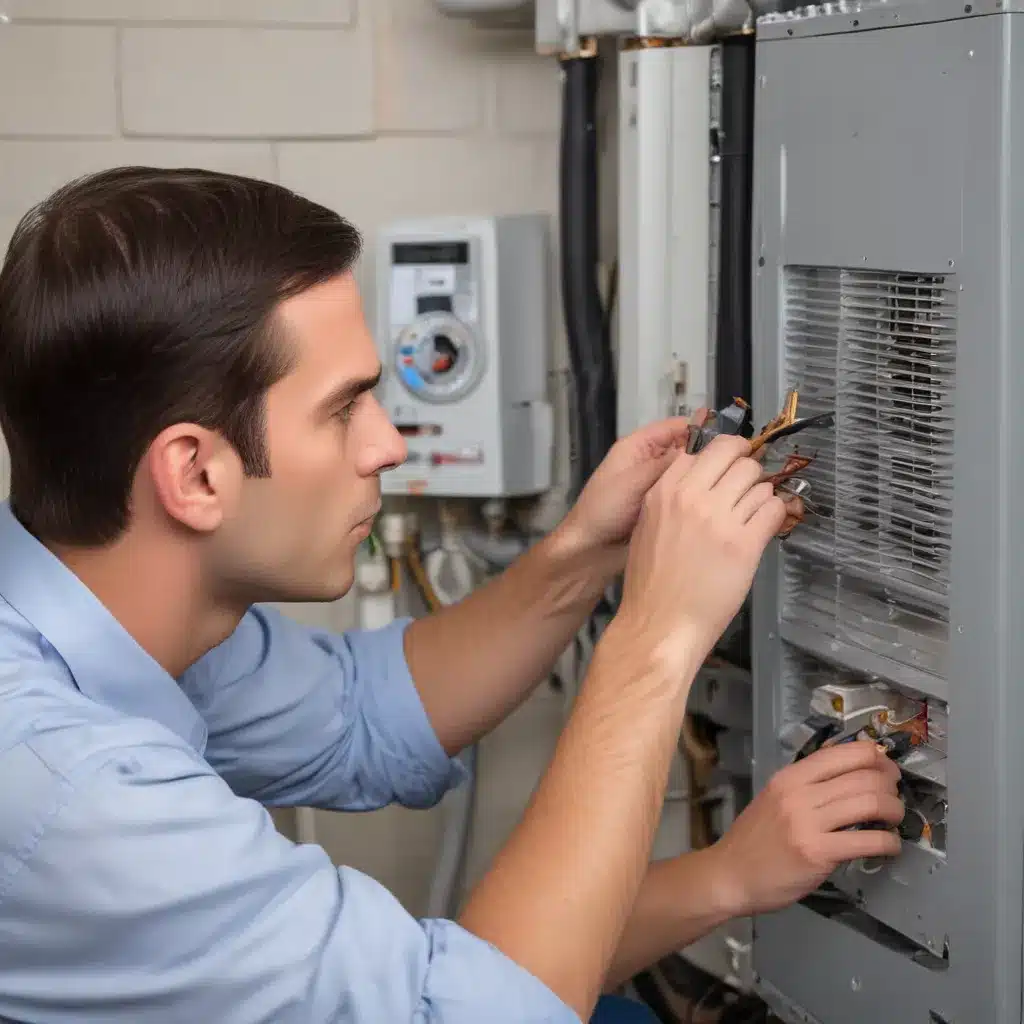
As an experienced HVAC specialist, I’ve seen firsthand the impact that short-cycling can have on the efficiency and longevity of air conditioning and heating systems. Short-cycling, where your HVAC unit turns on and off in rapid succession, can be a frustrating and energy-draining problem for homeowners and commercial property managers alike. In this comprehensive guide, we’ll dive into the common causes of short-cycling, provide practical troubleshooting steps, and explore innovative energy efficiency solutions to keep your HVAC system running at its best, no matter the season.
Identifying and Diagnosing Short-Cycling
The first step in resolving short-cycling issues is to recognize the signs. Short-cycling occurs when your air conditioning or heating system turns on and off more frequently than normal, failing to complete a full cooling or heating cycle. This can result in uneven temperature control, higher energy bills, and accelerated wear and tear on your HVAC equipment.
Some telltale signs of short-cycling include:
– Your system turns on and off every few minutes, never reaching the desired temperature.
– Your home or commercial space feels inconsistently warm or cool, with hot and cold spots.
– Your energy bills have spiked, even though your usage habits haven’t changed.
– You hear your system’s compressor or blower cycling on and off repeatedly.
If you’re experiencing any of these issues, it’s crucial to have a professional HVAC technician inspect your system and diagnose the underlying cause. Potential culprits can range from simple air filter blockages to more complex electrical or refrigerant problems.
Resolving Common Causes of Short-Cycling
Once the root cause of your short-cycling has been identified, your HVAC specialist can recommend the appropriate solution. Here are some of the most common causes and how to address them:
Improper Thermostat Placement
The location of your thermostat can significantly impact your HVAC system’s performance. If the thermostat is placed too close to a heat source, such as a sunny window or a vent, it may detect inaccurate temperatures, causing the system to short-cycle. double-check that your thermostat is positioned in a central, shaded area, away from any potential heat sources.
Wiring and Electrical Issues
Faulty or loose electrical connections can disrupt the communication between your thermostat and the HVAC unit, leading to short-cycling. Your HVAC technician can inspect the wiring and make any necessary repairs to restore proper functionality.
Refrigerant Leaks
A common cause of short-cycling is a refrigerant leak in your air conditioning system. When there’s insufficient refrigerant, the system has to work harder to cool the air, causing it to short-cycle. Your technician can perform a leak test, locate the source of the leak, and recharge the system with the proper refrigerant level.
Airflow Restrictions
Restricted airflow, often caused by clogged air filters or ductwork issues, can force your HVAC system to work harder, leading to short-cycling. Regularly changing your air filters and having your ductwork inspected can help double-check that optimal airflow and prevent this problem.
Equipment Failures
Failures in critical HVAC components, such as the compressor, blower, or control board, can also trigger short-cycling. Your technician can diagnose and replace any faulty parts to restore your system’s proper function.
Improper System Sizing
If your HVAC system is too large or too small for your home or commercial space, it can short-cycle. An oversized unit will cool or heat the space too quickly, causing it to shut off before reaching the desired temperature. Conversely, an undersized unit will struggle to keep up with the cooling or heating demands, leading to short-cycling. double-check that your system is properly sized for your specific needs.
Optimizing HVAC Performance and Energy Efficiency
Once the short-cycling issues have been addressed, there are several strategies you can implement to improve your HVAC system’s overall performance and energy efficiency:
Regular Maintenance and Tune-ups
Scheduling annual HVAC maintenance and tune-ups is crucial for maintaining optimal system performance and preventing future issues. During these visits, your technician can inspect critical components, clean the system, and double-check that proper refrigerant levels, among other tasks.
Thermostat Upgrades
Consider upgrading to a programmable or smart thermostat that can automatically adjust your home or building’s temperature based on occupancy and usage patterns. These advanced thermostats can help reduce energy consumption and prevent short-cycling by maintaining more precise temperature control.
System Upgrades
If your HVAC system is older or inefficient, it may be time to consider a replacement. Newer, energy-efficient models can not only help reduce your energy bills but also provide more consistent temperature control, minimizing the risk of short-cycling.
Ductwork Optimization
Ensuring your ductwork is properly designed, sealed, and insulated can significantly improve airflow and reduce the strain on your HVAC system, helping to prevent short-cycling. Your HVAC technician can evaluate your ductwork and recommend any necessary modifications.
Indoor Air Quality Enhancements
Improving your indoor air quality can also contribute to more efficient HVAC operation. Investing in high-efficiency air filters, air purifiers, and humidity control systems can help keep your system running at its best.
By addressing the root causes of short-cycling and implementing these optimization strategies, you can enjoy a more comfortable, energy-efficient, and long-lasting HVAC system, no matter the season. Remember, regular maintenance and working with a trusted HVAC specialist are key to ensuring your system operates at its peak performance.
For more information on air conditioning, heating solutions, and HVAC system maintenance, visit usaircontractors.com or contact our team of experienced HVAC professionals today.
Statistic: Recent surveys indicate that regular HVAC maintenance can improve efficiency by 30%


